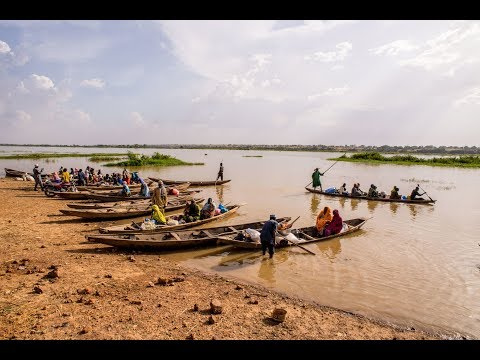Shoring Up Stability – Addressing climate and fragility risks in the Lake Chad region

This crisis is not simply collateral damage from harsh conditions in the Sahel. In fact, as a unique fresh water lake in the middle of the arid Sahara, Lake Chad is an ecological miracle. For millennia, it has been a source of life, resilience and even prosperity for the surrounding area. But since 2009, the parts of Nigeria, Niger, Chad and Cameroon bordering Lake Chad—which are home to more than 17.4 million people—have been locked into multiple and overlapping crises. Whether it will be possible for people to break out of this conflict trap will depend on a nuanced understanding of how climate change and conflict interact in this specific context.
Through the joint analysis of climate change and conflict risks, the present assessment takes an evidence-based approach to understand the different and connected dimensions of risk and inform appropriate responses. This report is the first of its kind on the Lake Chad region and a pioneer among climate-fragility risk assessments globally. It is the product of an intensive two-year period of research across all four countries. The assessment draws on long-term hydrological data from the Lake Chad basin, including ground measurements as well as brand new analysis of 20 years of satellite observations. It also builds on more than 200 interviews with community members, including past and present members of armed opposition groups, experts and officials, and an extensive review of the literature on Lake Chad. It aims to present a balanced, fact-driven conflict and climate risk assessment of the Lake Chad region that identifies key risks and proposes pragmatic solutions.

Explore the Shoring Up Stability website (all resources in English and French)
WATCH
Lake Chad’s conflict trap can seem insurmountable. But the region has always been a source of resilience and it can be again. Watch this video to learn what can be done to break the conflict trap and to shore up stability in the Lake Chad region.
The Security Council “recognises the adverse effects of climate change and ecological changes … on the stability of the Region, including through water scarcity, drought, desertification, land degradation, and food insecurity, and emphasises the need for adequate risk assessments and risk management strategies by governments and the United Nations relating to these factors.”
MOHAMED'S STORY
The story of Lake Chad is one of a people-centred crisis which requires people-centred responses. Through Mohamed’s story, we see how climate change and conflict have interacted and affected the life, livelihoods and prospects of one man and his family. Read the comic.
VISUALS
Maps and Infographics
A series of maps and infographics visualize the Lake Chad water level fluctuation and groundwater systems, numbers of IDPs and refugees in the region, the contribution of climate change to conflict dynamics, related restrictions on cross-border movement and trade, pathways between conflict and peace, and more.
Photo Exhibition
The photos that illustrate the key findings of the study “Shoring up stability: Addressing Climate and Fragility Risk in the Lake Chad Region” were taken by award-winning photographer and film maker Arno Trümper, who accompanied the project team during their research in Niger, Nigeria and Chad between October 2018 and April 2019.














